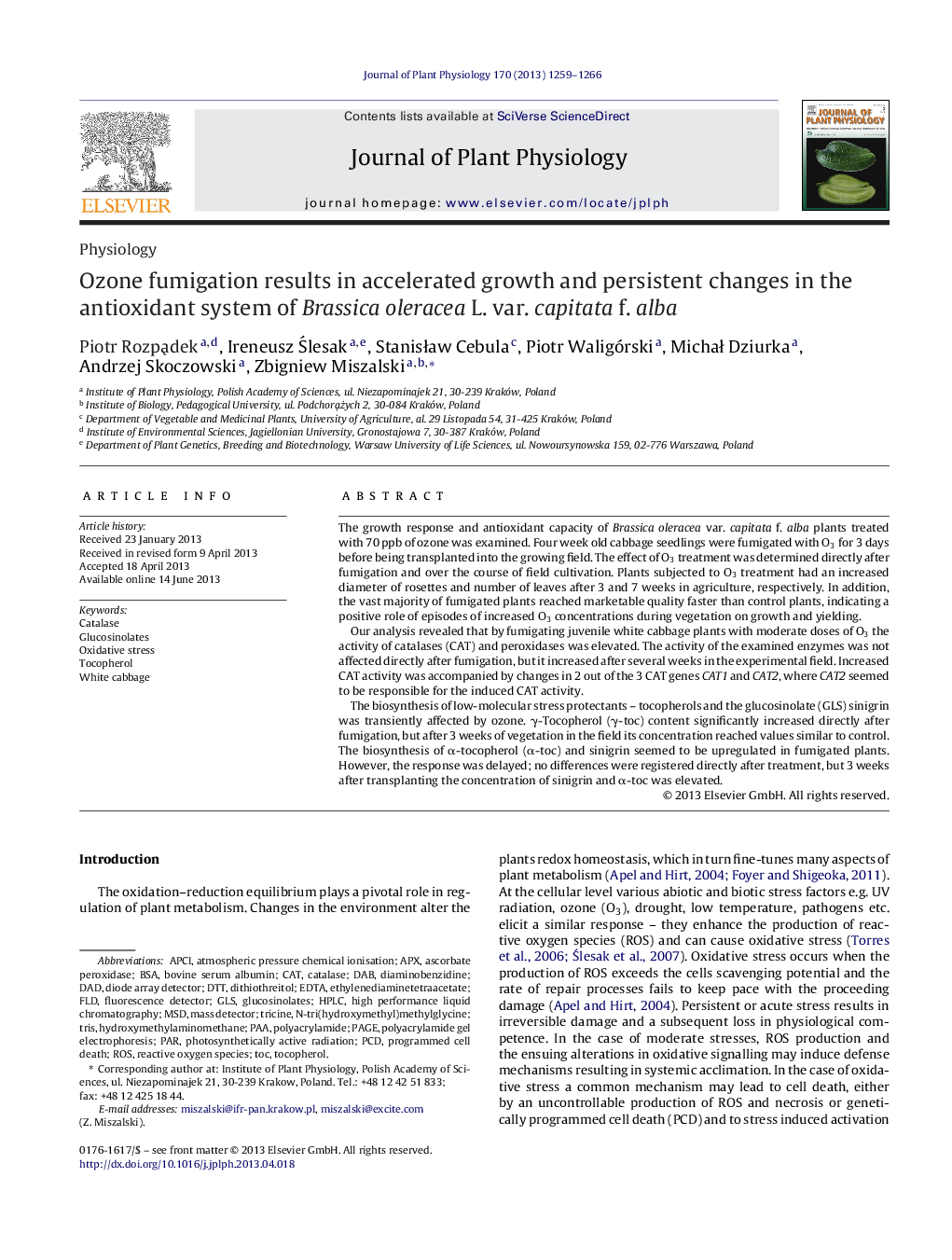| Article ID | Journal | Published Year | Pages | File Type |
|---|---|---|---|---|
| 2055964 | Journal of Plant Physiology | 2013 | 8 Pages |
The growth response and antioxidant capacity of Brassica oleracea var. capitata f. alba plants treated with 70 ppb of ozone was examined. Four week old cabbage seedlings were fumigated with O3 for 3 days before being transplanted into the growing field. The effect of O3 treatment was determined directly after fumigation and over the course of field cultivation. Plants subjected to O3 treatment had an increased diameter of rosettes and number of leaves after 3 and 7 weeks in agriculture, respectively. In addition, the vast majority of fumigated plants reached marketable quality faster than control plants, indicating a positive role of episodes of increased O3 concentrations during vegetation on growth and yielding.Our analysis revealed that by fumigating juvenile white cabbage plants with moderate doses of O3 the activity of catalases (CAT) and peroxidases was elevated. The activity of the examined enzymes was not affected directly after fumigation, but it increased after several weeks in the experimental field. Increased CAT activity was accompanied by changes in 2 out of the 3 CAT genes CAT1 and CAT2, where CAT2 seemed to be responsible for the induced CAT activity.The biosynthesis of low-molecular stress protectants – tocopherols and the glucosinolate (GLS) sinigrin was transiently affected by ozone. γ-Tocopherol (γ-toc) content significantly increased directly after fumigation, but after 3 weeks of vegetation in the field its concentration reached values similar to control. The biosynthesis of α-tocopherol (α-toc) and sinigrin seemed to be upregulated in fumigated plants. However, the response was delayed; no differences were registered directly after treatment, but 3 weeks after transplanting the concentration of sinigrin and α-toc was elevated.
